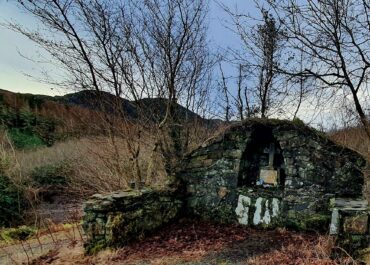Cross - High cross (present location), Churchland Quarters, Co. Donegal
Located at the northeast corner of a modern graveyard in Carndonagh, County Donegal, this remarkable high cross stands as one of Ireland's most intricately carved early Christian monuments.
Cross - High cross (present location), Churchland Quarters, Co. Donegal
The 2.5-metre-tall cross, along with two accompanying stone sculptures, was relocated to its current position beside the road to protect these National Monuments from erosion. Originally erected about 20 metres northeast on the opposite side of the road, these stones likely belonged to an early monastery that once occupied the area now encompassed by the present churchyard and 18th-century Church of Ireland building.
The cross itself is a masterpiece of early medieval stone carving, measuring 1.1 metres across the arms and featuring elaborate decoration on both faces. The east face depicts what appears to be the Crucifixion scene, with Christ in robes and his legs turned to the left, flanked by various figures that may represent angels, thieves, or the saints Stephaton and Longinus. Below this central scene, three long-robed figures facing left are thought to represent the Three Holy Women approaching Christ’s tomb. The entire surface is adorned with intricate interlace patterns, including an elaborate cross formed from two plaited bands at the top, with triquetras and bird motifs filling the spaces between. The weathered west face displays a wide-ribboned interlace pattern running across its entire surface, whilst the south edge features four connected female figures.
The two flanking pillar stones, each standing about 80 centimetres tall and 30 centimetres square, are equally fascinating in their carved details. The northern stone depicts a varied cast of characters including a figure with shield and sword, a harpist, and decorative pelta designs. Its southern companion features an ecclesiastical figure holding a bell and book with a crozier, an animal-headed figure with discs and hammer, and most unusually, a human head emerging from a fish’s mouth. These three monuments now rest on a modern plinth that incorporates the original flat-topped boulder, which contains the rectangular socket that once held the cross at its original location.


